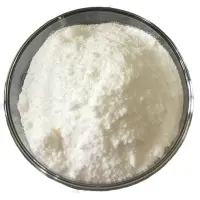-
Categories
-
Pharmaceutical Intermediates
-
Active Pharmaceutical Ingredients
-
Food Additives
- Industrial Coatings
- Agrochemicals
- Dyes and Pigments
- Surfactant
- Flavors and Fragrances
- Chemical Reagents
- Catalyst and Auxiliary
- Natural Products
- Inorganic Chemistry
-
Organic Chemistry
-
Biochemical Engineering
- Analytical Chemistry
-
Cosmetic Ingredient
- Water Treatment Chemical
-
Pharmaceutical Intermediates
Promotion
ECHEMI Mall
Wholesale
Weekly Price
Exhibition
News
-
Trade Service
Diacerein is a widely used pharmaceutical ingredient that is employed in the treatment of several skin conditions such as psoriasis, eczema, and dermatitis.
The production process of diacerein involves several steps that are required to extract and purify the active ingredient from its starting material.
The first step in the production process of diacerein is the extraction of the active compound from its source plant, the Centella asiatica.
This is typically done using a solvent such as methanol or ethyl acetate.
The extract is then filtered to remove any impurities and concentrated to increase the concentration of diacerein.
The next step in the production process of diacerein is the purification of the extract to remove any remaining impurities.
This is typically done using a combination of chromatography techniques such as gel filtration, high-performance liquid chromatography (HPLC), and thin-layer chromatography (TLC).
These techniques are used to separate the diacerein from other compounds present in the extract, and to produce a pure sample of the active ingredient.
The purified diacerein is then typically formulated into a final product, such as a cream or ointment, for topical application.
The formulation process typically involves mixing the purified diacerein with other ingredients such as carriers, preservatives, and emulsifiers to produce a stable, consistent product.
Quality control is an important step in the production process of diacerein, and is typically done at each step to ensure that the final product meets the required specifications for purity, potency, and stability.
This can involve testing the final product for its chemical composition, microbiological content, and stability, as well as testing the raw materials and intermediates for their purity and composition.
In conclusion, the production process of diacerein involves several steps that are required to extract and purify the active ingredient from its starting material, and to formulate it into a final product.
Quality control is an important aspect of the process, and is critical to ensuring that the final product meets the required specifications for purity, potency, and stability.







